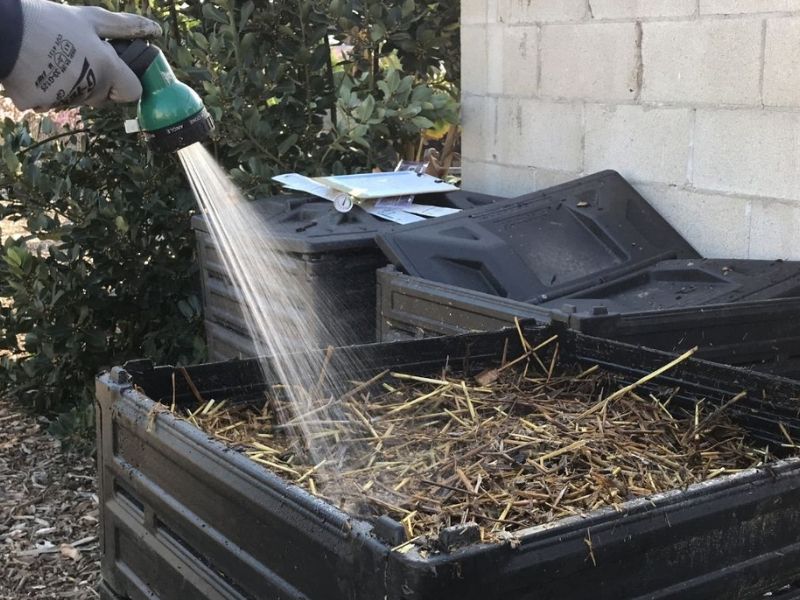How can I reduce the amount of water I use when composting?

Water conservation is an important concern for all homeowners and gardeners in California these days, especially in Southern California as it gets into the warmer summer months. Using compost in your yard and garden helps to reduce the amount of watering that your plants need by improving soil structure and, thus, the soil’s ability to retain moisture and get it to the roots. (Read more about this concept in Biocycle’s recent articles: Part 1: Recycled Organics As Drought Resilience Tools & Part 2: Urban Drought Resilience Tools.) Composting activities, particularly active, “hot” piles, also require some water to keep the materials moist and produce optimal conditions for decomposition.
Here are a few tips for reducing the amount of water necessary for creating and maintaining your compost bin or pile:
- Site the compost bin or pile in the shade to reduce moisture loss through evaporation in the hot sun.
- When adding dry “brown” or carbon-rich materials (e.g., straw, dried weeds or stalks), presoak in a wheelbarrow or large tub so that less water is required to achieve the desired “wrung-out sponge” moisture level. Then use the soak water elsewhere in your yard or garden.
- If you determine that your pile is too dry or you wish to address dry spots, add water during the morning or evening hours to minimize the effects of evaporation. For water conservation, this is the best time to water plants as well.
- A layer of straw, leaf mold, cardboard or burlap placed on top of a pile can help retain moisture. Simply pull back the layer when adding to the pile or turning.
- Consider composting methods that are less active – a slower, cooler pile or vermicomposting both require less watering.
- When possible, use harvested rainwater or greywater to add moisture to your pile. An easy way to do this without a greywater system is to keep a bin or big bowl in your sink as you do dishes. Once it fills up, go dump it into the compost pile or your garden!
